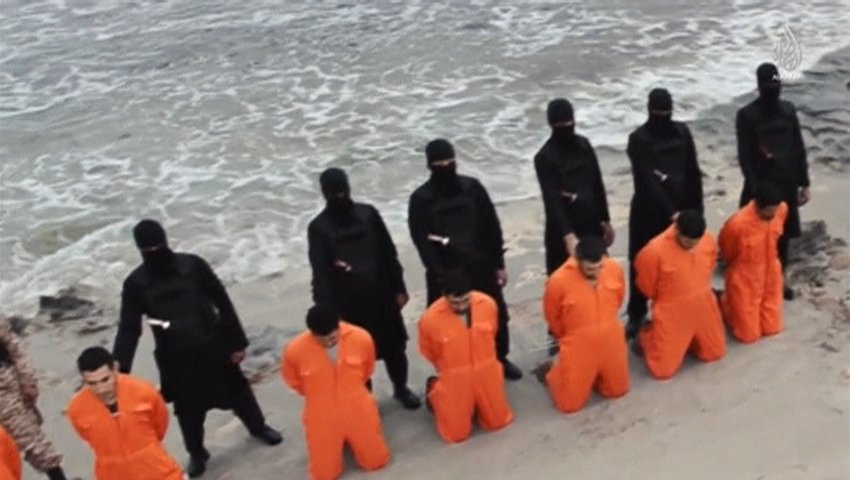Sara Aridi, Christian Science Monitor

Abu Bakr al-Baghdadi, who has been called the caliph of the self-proclaimed Islamic State (ISIS), has reconsidered the terrorist group’s gory media strategy.
Mr. Baghdadi banned the dissemination of the group’s infamous execution videos in a report issued to ISIS media offices in Syria and Iraq, according to local news sources.
While the militant leader made no suggestion of curbing the group’s atrocities, he demanded that any released footage of beheadings should exclude scenes of the actual execution and only expose moments before and after the act takes place.
Though he leads one of the world’s largest terrorist groups, Baghdadi prohibited brutal footage out of his consideration for “Muslims and children’s feelings who may find these scenes grotesque,” an ISIS source told local media.
Some ISIS militants supported Baghdadi’s decision and agreed that their beheading scenes may be too “barbaric.” Others denounced the restriction and argued the footage is distributed to intimidate the groups’ enemies, not the common folk, ARA News reports.
The extremist group first shocked the globe last August when it distributed footage of one of its members, "Jihadi John," cloaked in all black and knife in hand, beheading American journalist James Foley. It was the first in a string of graphic and increasingly cinematic videos the group has released aiming to “sow terror and recruit followers,” writes the Committee to Protect Journalists (CPJ).
Now that ISIS has seized substantial territory in Iraq and Syria and continues to recruit an estimate of 1,000 foreign fighters a month, the shock value of their videos might not be their top priority.
 Twitter
Twitter
Speaking with ARA News, Syrian politician and lawyer Ferid Hisso said the group isn’t worried about pleasing its victims or the public. Evidently, its acts speak for themselves and will continue to do so.
The ban “won’t eliminate the IS-led horrors that have been seen by people around the world over the past couple of years,” Mr. Hisso said.
“Instead of banning the release of such videos, Baghdadi should have rather banned the crimes behind the scenes. But he has already justified the barbarism of his followers, and his decision makes no sense,” Hisso added.
Local observers say his decision may have been voiced a few weeks ago. The latest footage ISIS released after Baghdadi’s ban shows a young boy dubbed the “cub of the Caliphate” beheading a Syrian soldier, yet the clip didn’t feature any images of the actual execution.
ISIS executed several high-profile hostages following Mr. Foley’s beheading last summer in a similar fashion, including American journalist Steven Sotloff in September and Japanese reporter Kenji Goto in January.
Three days after releasing footage of Mr. Goto’s beheading, the group shared one of its most professionally produced videos, in which Moaz al-Kasasbeh, a Jordanian fighter pilot, was burned alive in an outdoor cage.
Whether or not viewers even watch ISIS’s graphic media, the group’s “strategy is to bypass established news organizations and reach the intended audience directly,” according to CPJ.
“After all, ISIS fighters do not give interviews,” CPJ writes. “They speak directly into the camera.”
Read the original article on Christian Science Monitor. Copyright 2015.



